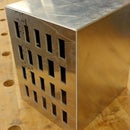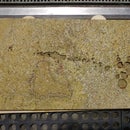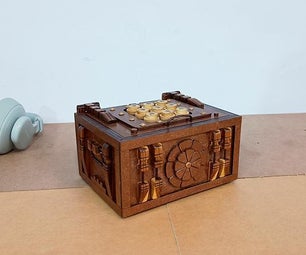Introduction: Using Algebra for Hanging Pictures
When traveling in Mexico last year, we bought some odd film stills of a movie called "El Profesor Erotico" (1976). At the time, I thought that it was an old campy Mexican TV show. Further research on the internet showed that it was a B-movie of the Argentinian variety*. We had purchased 4 photographs, got them framed and wanted to hang them on a wall.
In the past, I've done all sorts of division, taping and remeasuring work out how exactly to hang sets of pictures. After thinking about how negative and positive space are a matter of perception, I realized the solution to this would be to use simple 8th grade algebra.
This technique will save you tons of hassle of measuring, remeasuring, chicken scratch division and putting blue tape all over the place.
* I have no idea what they are doing with the blow-up doll, but all the film stills are equally puzzling and funny.
In the past, I've done all sorts of division, taping and remeasuring work out how exactly to hang sets of pictures. After thinking about how negative and positive space are a matter of perception, I realized the solution to this would be to use simple 8th grade algebra.
This technique will save you tons of hassle of measuring, remeasuring, chicken scratch division and putting blue tape all over the place.
* I have no idea what they are doing with the blow-up doll, but all the film stills are equally puzzling and funny.
Step 1: Sketch Your Space
Each frame is identical. The plan was to hang them in a row, on the same wall with an equal amount of white space between each picture. On the left side of the wall is a door frame and the right edge is another door. These edges will like be margins on a page with an equal amount of wall space as the center.
Draw a simple diagram of the space. Take your time and refer back to this when you are doing the measurements. I drew mine exceedingly quickly. The doorways are the large rectangles that drift into an imaginary floor and the pictures are the tiny squares.
Draw a simple diagram of the space. Take your time and refer back to this when you are doing the measurements. I drew mine exceedingly quickly. The doorways are the large rectangles that drift into an imaginary floor and the pictures are the tiny squares.
Step 2: Make Your Equation
This is a simple x and y equation. In this case x = the width of the picture frame and y = the space between the picture frames. Also, measure the total expanse of the wall. In my case, the total wall space = 126 3/4" which is 126.75 if we express in a decimal (we'll convert back to a fraction when we are done).
Our equations is: 5y + 4x = 126.75
We have 4 picture frames and 5 negative spaces of equal length.
Our equations is: 5y + 4x = 126.75
We have 4 picture frames and 5 negative spaces of equal length.
Step 3: Measure Your Picture Frames
Measure your frame and this becomes your x value. In this case, the picture frame = 14.5 inches wide.
The equation is: 5y + (4 * 14.5) = 126.75
The equation is: 5y + (4 * 14.5) = 126.75
Step 4: Solve for Y
What we want to know is what y =. Remember how torturous algebra was? We're smarter now and have the full use of the web. It's pretty easy. Use your sheet as a scratch pad.
5y + (4 * 14.5) = 126.75
5y + 58 = 126.75
5y = 68.75
y = 13.75
5y + (4 * 14.5) = 126.75
5y + 58 = 126.75
5y = 68.75
y = 13.75
Step 5: Convert the Decimal to Fractions
Most rulers are in inches or millimeters and show fractional values. In this case, 13.75 easily converts to 13 3/4.
It's helpful to refer to a decimal to fraction conversion table if you have decimal values you can't convert so easily in your head to fractional measurements.
It's helpful to refer to a decimal to fraction conversion table if you have decimal values you can't convert so easily in your head to fractional measurements.
Step 6: Now Hang Your Pictures
There are other Instructables on how to hang the pictures themselves such as this one. My Instructable will provides a calculation technique for the horizontal space. I'm a fan of using the blue tape at this point and never marking the wall with a pencil. Mark the blue tape itself. Leave no trace.
Step 7: Apply the Technique to Other Situations
Here is another hanging situation for an art show I did several years ago.
Each picture is 30" wide. I had 150 inches total wall space, and I wanted to have the middle sections be twice as wide as the wall space on the outside.
Here the equation is 3x + 6y = 150
You can use the same mickey-mouse algebra to solve this problem. Next time someone says "Math is Hard", remember it's time to liberate your toys.
Enjoy!
Each picture is 30" wide. I had 150 inches total wall space, and I wanted to have the middle sections be twice as wide as the wall space on the outside.
Here the equation is 3x + 6y = 150
You can use the same mickey-mouse algebra to solve this problem. Next time someone says "Math is Hard", remember it's time to liberate your toys.
Enjoy!











